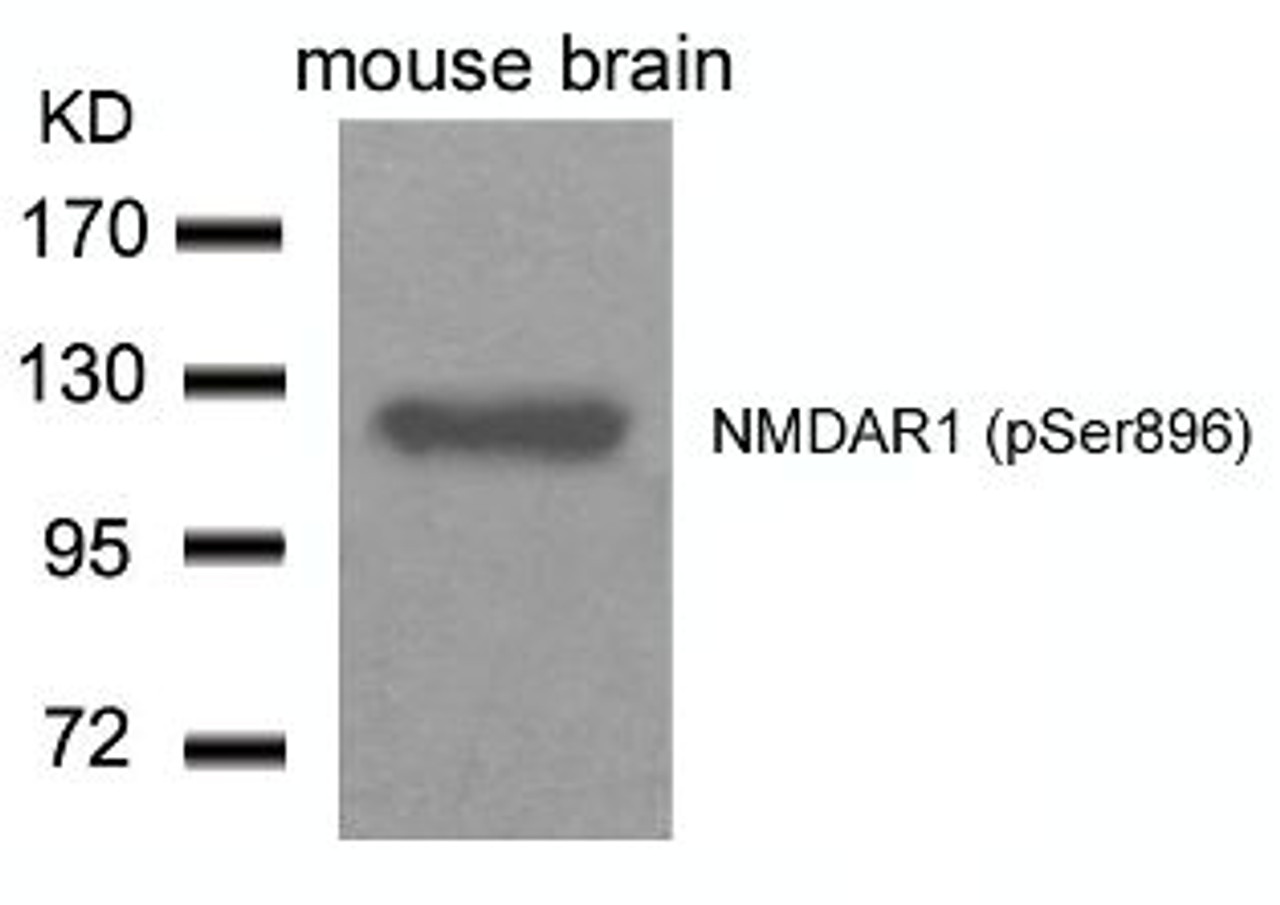Product Description
NMDAR1 (phospho Ser896) Antibody | 79-452 | ProSci
Host: Rabbit
Reactivity: Human, Mouse, Rat
Homology: N/A
Immunogen: NMDAR1 (Phospho-Ser896) antibody was raised against a peptide sequence around phosphorylation site of serine 896 (R-R-S (p) -S-K) derived from Human NMDAR1.
Research Area: Phospho-Specific, Neuroscience
Tested Application: WB
Application: Western Blot: 1:500~1:1000
Specificiy: This antibody detects endogenous level of NMDAR1 only when phosphorylated at serine896.
Positive Control 1: N/A
Positive Control 2: N/A
Positive Control 3: N/A
Positive Control 4: N/A
Positive Control 5: N/A
Positive Control 6: N/A
Molecular Weight: 120 kDa
Validation: N/A
Isoform: N/A
Purification: Antibodies were purified by affinity-chromatography using epitope-specific phosphopeptide. Non-phospho specific antibodies were removed by chromatogramphy using non-phosphopeptide.
Clonality: Polyclonal
Clone: N/A
Isotype: N/A
Conjugate: Unconjugated
Physical State: Liquid
Buffer: Antibody supplied in phosphate buffered saline (without Mg2+ and Ca2+) , pH 7.4, 150mM NaCl, 0.02% sodium azide and 50% glycerol.
Concentration: 1 mg/mL
Storage Condition: Store antibody at -20˚C for up to one year.
Alternate Name: NR1, MRD8, GluN1, NMDA1, NMDAR1, BBC6, BCL2L8, GLURZ1, GRIN1, NMD-R1, NMDZ1, NMZ1
User Note: N/A
BACKGROUND: NMDA receptors are members of the ionotropic class of glutamate receptors, which also includes Kainate and AMPA receptors. NMDA receptors consist of NR1 subunits combined with one or more NR2 (A-D) or NR3 (A-B) subunits. The ligand-gated channel is permeable to cations including Ca2+, and at resting membrane potentials NMDA receptors are inactive due to a voltage-dependent blockade of the channel pore by Mg2+. NMDA receptor activation, which requires binding of glutamate and glycine, leads to an influx of Ca2+ into the postsynaptic region where it activates several signaling cascades, including pathways leading to the induction of long-term potentiation (LTP) and depression (LTD) . NMDA receptors have a critical role in excitatory synaptic transmission and plasticity in the CNS. They govern a range of physiological conditions including neurological disorders caused by excitotoxic neuronal injury, psychiatric disorders and neuropathic pain syndromes.
 Euro
Euro
 USD
USD
 British Pound
British Pound
 NULL
NULL










